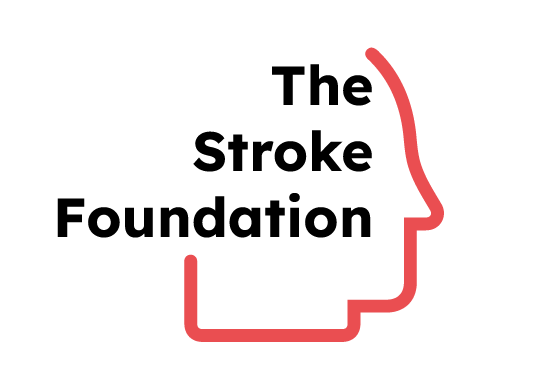About Stroke
Types Of Stroke
Different Types of Stroke

Different Stroke Types
Not All Strokes
Are the Same
An ischemic stroke occurs when a blockage, usually a blood clot, in an artery prevents blood flow to the brain. The lack of oxygenated blood flow will make brain cells stop working, which is why acting F.A.S.T is extremely important. A blockage that last a few minutes can mean long-lasting disabilities.
There are two main types of ischemic stroke:
- Embolic: a blood clot forms outside of the brain and travels through an artery to the brain.
- Thrombotic: a blood clot forms in an artery within the brain.
Ischemic stroke represents over 80% of all strokes.
When an artery in the brain ruptures or leaks bloods it can cause a hemorrhagic stroke. The sudden rush of blood will put pressure on brain cells which causes them to be damaged and stop working.
High blood pressure is a major risk factor for hemorrhagic stroke. This type of stroke can happen in two ways:
- Intracerebral: the hemorrhage affects the surrounding brain tissue.
- Subarachnoid: the hemorrhage affects the area between the skull and the brain (much less common type of stroke).
A transient ischemic attack, also known as a “mini-stroke”, occurs when a blockage prevents blood flow to the brain for a very short time (minutes).
It is important to understand that a TIA is a warning sign — getting the appropriate care at the time and making lifestyle changes can be life-saving. The symptoms of a TIA can be similar to a stroke, which is why it’s very important to call 911 and get immediate help.
A brain stem stroke occurs when blood flow to the brain stem is blocked or reduced, affecting vital functions like breathing, heartbeat, and movement. Because the brain stem controls basic life functions and connects the brain to the spinal cord, these strokes can lead to severe complications, including paralysis, speech issues, and loss of consciousness. Immediate medical attention is critical.
A cryptogenic stroke is a type of ischemic stroke with no identifiable cause, even after thorough medical testing. It often occurs in younger, otherwise healthy individuals and may be linked to hidden risk factors like atrial fibrillation or blood clotting disorders. Identifying and managing potential underlying causes is key to preventing future strokes.
Helpful Resources
Knowledge That Supports
Have Questions About Stroke Symptoms Or Recovery?
FAQs
You’re Not Alone in This
Up to 80% of strokes can be prevented by managing key risk factors such as high blood pressure, high cholesterol, smoking, diabetes, and lack of physical activity. Making healthy lifestyle choices—like eating a balanced diet, exercising regularly, avoiding tobacco, and limiting alcohol—can significantly reduce your risk. Regular check-ups and working with your doctor to manage any medical conditions are also critical steps in prevention.
To lower your stroke risk, focus on managing key health factors: keep your blood pressure and cholesterol in check, maintain a healthy weight, eat a balanced diet (like the Mediterranean or DASH diet), exercise regularly, avoid smoking, limit alcohol, manage diabetes if applicable, and treat conditions like atrial fibrillation. Regular checkups and following your doctor’s advice can make a big difference.
You should not take aspirin to prevent a stroke unless your doctor specifically recommends it. While aspirin can help prevent blood clots, it also carries a risk of bleeding, especially in people who do not have a history of stroke or heart disease. In some cases—such as for individuals with a high risk of stroke or those who have already had a stroke or heart attack—aspirin may be beneficial. However, for most people, the risks can outweigh the benefits. Always talk to your healthcare provider before starting aspirin or any other medication for stroke prevention.
Diet plays a significant role in your risk of having a stroke. Eating a diet high in saturated fats, trans fats, sodium, and added sugars can increase your chances of developing conditions like high blood pressure, high cholesterol, obesity, and diabetes—all of which are major stroke risk factors. On the other hand, a healthy, balanced diet can help protect against stroke. Consuming plenty of fruits, vegetables, whole grains, lean proteins, and healthy fats supports overall heart and brain health. Reducing your intake of processed foods, salt, and sugary drinks can help manage blood pressure and weight, both of which are key to lowering stroke risk. Simply put, what you eat every day can either increase or decrease your chances of having a stroke—making nutrition one of the most powerful tools for prevention.
If you’ve already had a stroke or a transient ischemic attack (TIA), taking action to prevent another one is critical. Start by working closely with your healthcare team to understand the cause of your stroke and follow their treatment plan carefully. This may include taking prescribed medications to manage blood pressure, cholesterol, or prevent blood clots. Making lifestyle changes is also essential. Eating a heart-healthy diet, exercising regularly, quitting smoking, limiting alcohol, and managing stress can all lower your risk of another stroke. Attend all follow-up appointments, participate in any recommended rehabilitation programs, and monitor your health conditions closely. A TIA or stroke is a serious warning sign—but with the right steps, you can significantly reduce the chance of it happening again.

